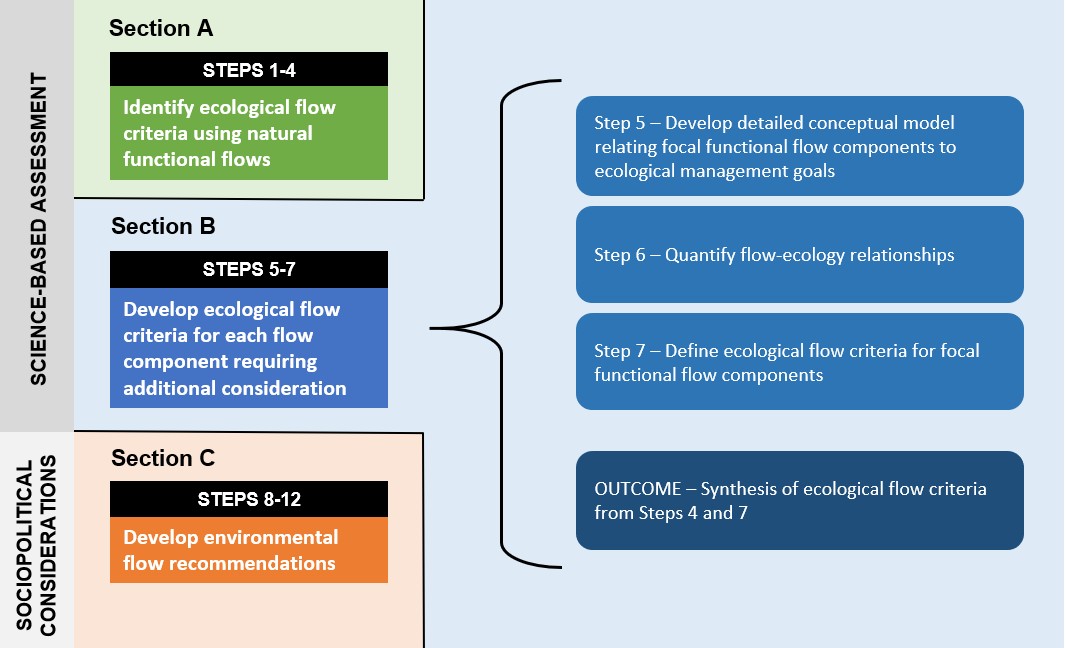B: Develop ecological flow criteria for focal flow components requiring additional consideration
The user starts Section B after developing ecological flow criteria in Section A for functional flow components where the natural ranges of functional flow metrics are expected to support the ecosystem functions needed to achieve ecological management goals. Section B is skipped in some circumstances: When the user determines in Section A that the natural ranges of flow metrics can be used to develop ecological flow criteria for all five functional flow components, the user skips Section B and proceeds to Section C. However, where alteration of non-flow factors (e.g. physical habitat, water quality, or biologic conditions) limit the ability of the natural ranges for flow metrics to support desired ecological functions (Step 3), further analysis for these functional flow component(s) is completed in Section B.
In Section B, the user performs a detailed analysis of the linkages between flow, physical habitat, water quality, and biological interactions to develop ecological flow criteria for the functional flow components requiring additional consideration. At the end of Section B, these criteria are combined with those developed in Section A to define a full set of ecological flow criteria associated with all functional flow components (Figure B.1).

Figure B.1. Overview of Section B steps
Section B begins with developing a conceptual model that links the functional flow components requiring additional consideration – referred to as focal functional flow components – to ecological management goals (Step 5). This involves specifying the direct and indirect pathways in which changes in the natural ranges for flow metrics can affect ecological responses. Next, the various pathways within the conceptual model are quantified using either existing flow-ecology relationships or analytical methods that rely on existing data or data generated from site-specific studies (Step 6). The outcome of Step 6 is one or more ecological response (i.e., flow-ecology) relationships that quantify how changes in functional flow components affect ecological responses of interest, accounting for mediating factors such as water quality, physical habitat, and biological interactions. In Step 7, the user evaluates the flow-ecology relationships to define target values as ecological flow criteria for the focal functional flow components. These ecological flow criteria are then combined with those defined in Section A to establish a full set of ecological flow criteria for all five functional flow components required to achieve ecological management goals.
Section B requires general knowledge of the ecology and hydrology of the study area and familiarity with the technical methods used to quantify flow-ecology relationships. General guidance on constructing and quantifying conceptual models is included in Steps 5 and 6; however, these steps do not provide specific guidance on which mediating factors and ecosystem functions should be included in conceptual models or which tools should be used to quantify relationships. Decisions on how to structure the conceptual models and apply tools and quantitative methods will have a significant influence on the quality and nature of the results, and as such, should be developed through an open, collaborative process informed by experts and multiple stakeholders.